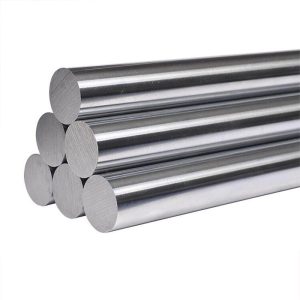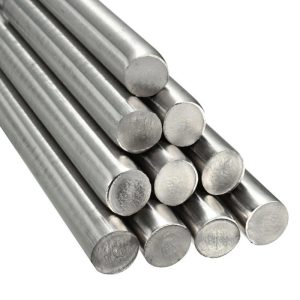What is the strength of 316 stainless steel rod?
03-25-2024
Stainless steel is an alloy material widely used in various industrial fields and is favored for its excellent corrosion resistance, aesthetics and durability. Among the many stainless steel varieties, 316 stainless steel has received much attention for its unique composition and characteristics. This paper aims to investigate the strength characteristics of 316 stainless steel bar.
1) Composition of 316 stainless steel rod
316 stainless steel rod is mainly composed of iron, chromium, nickel and a small amount of molybdenum, copper and other elements. Among them, the presence of chromium makes stainless steel have excellent corrosion resistance, while nickel enhances its toughness and ductility. The addition of molybdenum further improves the corrosion resistance of 316 stainless steel, especially the pitting resistance in chloride environments.
2) Corrosion Resistance
One of the key strengths of 316 stainless steel rod is its excellent corrosion resistance. The chromium content in the steel forms a protective oxide layer on the surface, which prevents oxygen and moisture from penetrating the material and causing corrosion. This protective layer is particularly effective in saltwater environments, making 316 stainless steel rod an ideal choice for marine applications.
3) Strength characteristics
Strength, in simple terms, refers to the ability of a material to resist damage when subjected to external forces. For metal materials, this usually involves tensile strength, yield strength, impact strength and other aspects. 316 stainless steel bars perform well in these areas.
Tensile strength refers to the maximum tension that a material can withstand during the tensile process until it breaks. The tensile strength of 316 stainless steel bars is usually high, which means that it can withstand large tensile forces while still maintaining the integrity of the structure, not easy to break.
The yield strength is the critical point at which the material begins to undergo plastic deformation when subjected to external forces. The yield strength of the 316 stainless steel bar is also high, which means that when subjected to external force, it can absorb more energy and deform to a certain extent without breaking immediately.
In addition to the above two kinds of strength, impact strength is also one of the important indicators to evaluate the properties of materials. It represents the resistance of a material to impact loads. 316 stainless steel rod due to its alloy composition and unique heat treatment process, usually has a high impact strength, can maintain the stability of the structure under extreme conditions.
4) Application field
The strength and durability of 316 stainless steel rod make it ideal for use in a wide range of applications. It is commonly used in the construction of marine equipment, chemical processing equipment, and medical devices due to its resistance to corrosion and staining. Additionally, 316 stainless steel rod is also used in the manufacturing of fasteners, valves, and pumps due to its high tensile strength and ability to withstand extreme temperatures.
5) Conclusion
316 stainless steel rod is a strong, durable, and corrosion-resistant material that is widely used in various industrial applications. Its unique composition and properties make it suitable for use in a range of environments, including marine, chemical processing, and medical applications. The strength and durability of 316 stainless steel rod are key factors in its widespread use and continue to make it a popular choice for engineers and manufacturers seeking high-performance materials.








